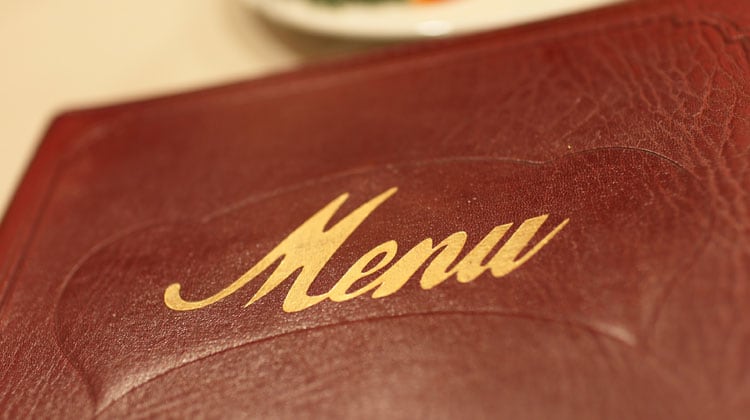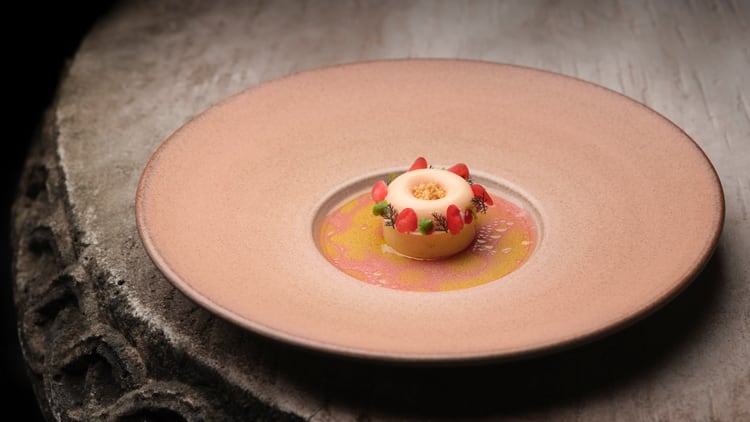A la carte doesn’t sound very revolutionary, surely all restaurants do it?
Not anymore. As fine dining restaurants strove to reach even greater heights their ability to provide customers with choice diminished. Over the past decade there has been an increasing number of ambitious chefs choosing to offer a fixed selection of dishes each service.
Why has the tasting menu become so popular?
There are a number of reasons. First, having only an (often) small number of dishes to focus on each service has enabled chefs to get ever more creative with their cooking in a way that wouldn’t be possible if they had to create numerous different ones on any given day. Offering only a tasting menu also gives the restaurant much greater control on how they create a journey for customers (controlling the restaurant narrative, as it were), and can be easily paired with wine. Operationally, it is also much easier to offer a dining room just one menu both in terms of ordering ingredients beforehand, mise en place and prep work and during service, and there is also much less wastage as the kitchen knows exactly what everyone will be eating. Then there’s the obvious element of pricing; restaurants can often charge a premium for tasting menus (even though they do often offer good value for money) and so can increase revenue as a result.
That all sounds very sensible. So why are some restaurant now also offering à la carte?
It has a lot to do with the last point. In today’s tougher economic climate, some tasting-menu only restaurants are finding that they are pricing themselves out of the market by not giving their customers a cheaper point of entry. Restaurants are also reacting to people’s changing eating habits, especially among slightly younger foodies who often don’t want to sit through a three-hour meal every time they want to experience a top restaurant.
Who’s been making these changes?
The most recent place to introduce à la carte is Michelin-starred Cotswolds restaurant The Dining Room at Whatley Manor. As well as serving a 10-course £175 tasting menu executive chef Ricki Weston now offers a £120 à la carte menu. The menu begins with an ‘in-kitchen’ experience with diners then able to choice from six dishes (two each of starter, main and dessert) to create a three-course menu. He’s by no means alone, though. Other recent examples include Dave Mothersill’s Furna in Brighton, Gannet in Glasgow, and Dean Banks at The Pompadour in Edinburgh. Speaking about the decision, Banks said it was a response to his diners calling for more flexibility when eating out.
Will it work?
This remains to be seen. In several cases, including at Whatley Manor, the à la carte option is actually a smaller tasting menu in disguise in that the diner still needs to order three courses and the price is set, which takes away some of the freedom that a true à la carte menu offers. That said, it’s also good business sense to do this because of the aforementioned benefits of a tasting menu and it does provide a different entry point for certain diners without impacting too greatly on the kitchen.
Are restaurants taking any other approaches?
Fine dining doesn’t have to mean inflexibility or necessarily break the bank, and more and more restaurants are acknowledging this as people tighten their purse strings. Take what Stephen Harris does at his Michelin-starred The Sportsman in Kent. Harris serves a five-course tasting menu for £80 but it’s very much in the à la carte vein with diners able to choose between four dishes for every course and five for dessert. Its three-course midweek menu is more of The Whatley Manor mould, with a choice of two or three dishes for each course for a set price of £55. Two Michelin-starred Brooklands by Claude Bosi does a similar thing. Its à la carte menu also means that diners must choose three dishes for a set price (£145) but the selection of dishes to choose from is large. The restaurant also offers a long and shorter tasting menu of seven and five courses as a further point of entry for diners as well as a shorter three-course ‘Concorde’ lunch menu for £58.
Does this mean the death of the tasting menu-only restaurant?
Don’t be so dramatic. There will always be those chefs who want to give their customers a highly curated and completely individual experience and the best way to do this is through a tasting menu. It would be hard to see Gareth Ward, who famously serves a 30-course tasting menu at his two Michelin-starred restaurant Ynyshir, suddenly pivot to offering three courses. Likewise, there will always be those diners who, when they eat out, want to have all the decision making done for them. As Alex Dilling, executive chef at two Michelin-stared at Alex Dilling at Hotel Café Royal, recently told Restaurant, introducing à la carte might make good business sense but it would also fundamentally change the restaurant and his ambitions for it. “We need to stick by our guns and people have to submit to that experience, which is hard to do in a three-course format,” he said. “I like having eight different moments to impress people.”



